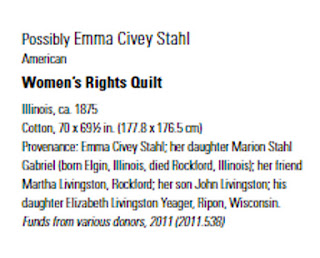Signature Quilt with an antislavery message, about 1848,
in the collection of the Royall House.
From the Massachusetts Project & the Quilt Index.
The Royall House & Slave Quarters is a Massachusetts museum with restored colonial era buildings including the only surviving slave quarters in the northern states (I'm always doubtful about words like "only" and "first".)
Isaac Royall was a Maine merchant with plantations in the West Indies (the Caribbean) who built a mansion in what is now Medford, Massachusetts, in the mid-18th century, described as "one of the grandest in North America.”
The two-story brick dormitory for slaves who were
brought from the Caribbean.
At least 27 enslaved people worked on the estate. After his father's death Isaac II, a British loyalist, abandoned the colonies and the home when the Revolutionary war began. The slaves became free people by default.
The museum is open to visitors in the summer.
Isaac Royal II and his wife Elizabeth Mackintosh Royall (in blue)
Like many historic houses the museum has a rather random collection of old quilts that have been donated over the past century. Small museums rarely kept detailed acquisition notes and a collecting focus was unusual until recent decades. Whether any of the quilts have a connection to anyone who lived in the house is unknown.
The notes in the Quilt Index indicate this
quilt has an antislavery message.
Mid-19th-century silk quilt.
Notes in the Quilt Index indicate a poem in
the center.
In the corners a detail photo reveals a printed silk:
"Plead for the Slave."
http://www.quiltindex.org/fulldisplay.php?kid=1D-FC-E5A
http://www.quiltindex.org/fulldisplay.php?kid=1D-FC-E5F
You can view all the quilts in a museum collection if they are in the Quilt Index by searching by museum name. Here's a link to the quilts recorded at the Royall House.
http://www.quiltindex.org/search_results.php?page=1&page10=0&keywords=royall&search=go


















































